I’ve always been fascinated by “Old School” perhaps too much so. A friend from Alaska had narrated a tale that stuck with me; how hunting with a rifle was almost too easy, so he switched to bow and arrow, closer to the hunter-gatherer ethic, but also proved easy. So he resolves to make a loin cloth and a spear, carefully hardening the tip in a fire, then stealthing through the brush intent on dinner.
As he comes out of the brush a large moose is within range, and he lets fly with the spear – which smacks the moose in the side, bouncing off the now startled animal, who proceeds to “tree” the ersatz Indian for a goodly part of the day. Loincloths ain’t much for mosquito protection, so the fellow donates three or four pints of blood waiting for the enraged moose to lose interest.
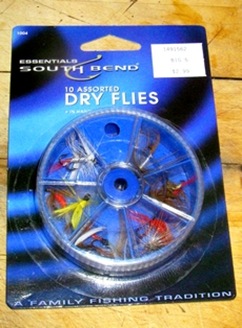 I’m a slow learner myself, so I figured it may be fun to go “Old School” on them Brownliner trash fish near my house. I’m not keen to throw spears or donate blood, but using some of the old flies and tackle seemed like a hoot.
I’m a slow learner myself, so I figured it may be fun to go “Old School” on them Brownliner trash fish near my house. I’m not keen to throw spears or donate blood, but using some of the old flies and tackle seemed like a hoot.
The flies were the easy part, as “genuine” old school flies are available from Big 5; Yellow Sally, Parmachene Belle, Coachmen, White Miller, McGinty, all machine tied on straight eyed hooks at least two sizes bigger than optimum.
The loincloth angle was genius, but enthusiasm lost to embarrassment as I surveyed the vast expanse of “lily white” flesh, likely to blind passing motorists and prey alike.
Catgut would be tough to come by, so I allowed the use of contemporary fly line and monofilament leader. All the old bamboo rods I had stashed away were oddities, likely to splinter on usage, but wedged in a dark corner was the first flyrod I had used in anger, a Fenwick Feralite 8’6″ for #5 line, a wonderful rod created at the zenith of fiberglass. I was set, I dripped .. primitive.
Lust overtook me as I knotted on a Yellow Sally, it was labeled a dry fly by Big 5, but I resolved to make it work. It hit the water like a Boeing 707, managing to float for 4 inches before succumbing to the weight of the round wire #8 hook. I’m possessed by tradition, quartering down and across, working through the brushy area – knowing these fish were easy meat and hadn’t seen a wet fly in at least 50 years.
Sacramento Pikeminnow and Carp intermingled with Bluegill and the occasional Bass, none known for selectivity, all favoring the impossible lie – sandwiched between the sunken shopping cart and castoff living room furniture. In no time I’m firmly imbedded in a rubber tire – the take was none too delicate, so I knew it was a steel belted radial.
The Coachman was next, I went garish on the first fly – figuring to go sedate on the second. A couple of casts later I see my first boil, a fleeing fish scared witless by the fly, it went south in a hurry and I buried the next cast into the brush, scratch the Coachman.
Two more flies later and I’m starting to think this is harder than I figured, I’m fishless and surrounded by fish that are either giggling or fleeing in panic. Shaken, I tied on a Pheasant Tail nymph and quickly hit three fish, two Bluegill and a Squawfish. I’m tempted to leave it on, but science got the better of wisdom, and I’m throwing a White Miller, tinsel and all.
The water is clear enough to see fish and the fly, and from all indications their having nothing to do with it. I figured the McGinty might sink a little faster and Bumblebees being natural might induce some passion – but even the Bluegill turned their nose up as it lumbered past.
I’m well into “the spear bounced off the hide” part of the adventure and can’t help but wonder how many fishermen Big 5 killed in their infancy. Poor bastards – if they’d just gone farther down the aisle they might have found the Montana nymph, and the story would’ve ended on a positive note.
Smaller sizes might’ve helped – smaller ego would’ve helped more…


 I was out the door before first light hoping to reacquaint myself with more Shad; I was laid up last week so I picked an access point at random hoping I could “slop” my way into fish…
I was out the door before first light hoping to reacquaint myself with more Shad; I was laid up last week so I picked an access point at random hoping I could “slop” my way into fish…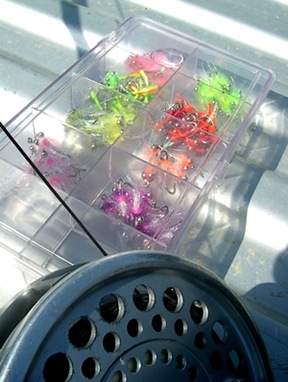 I spent the last couple of weekends Shad fishing – and like many of my trips, spent more time tying flies and losing them then putting them to good use.
I spent the last couple of weekends Shad fishing – and like many of my trips, spent more time tying flies and losing them then putting them to good use.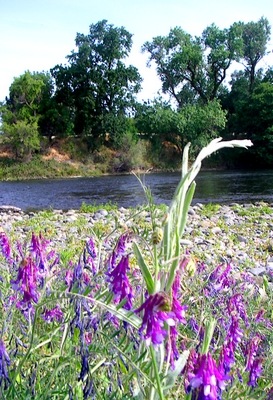 The Shad are at the mouth of the American – I have to drive by daily, cursing all the guys that called in sick and were miraculously cured when they donned their waders. Too many bait and spin fishermen to make a fly angler anything other than unpopular – but the fish will move up river as soon as they’re able.
The Shad are at the mouth of the American – I have to drive by daily, cursing all the guys that called in sick and were miraculously cured when they donned their waders. Too many bait and spin fishermen to make a fly angler anything other than unpopular – but the fish will move up river as soon as they’re able.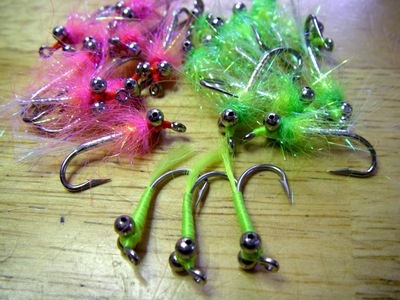


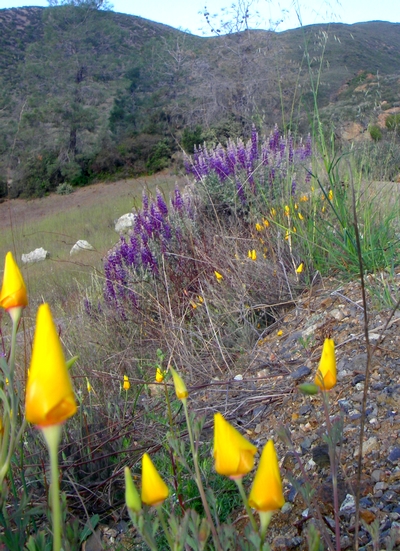



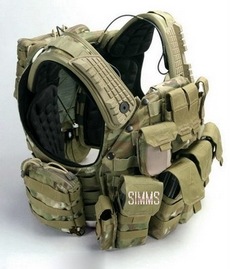 I managed to sneak up to the lake for some additional recon, taking advantage of the lack of wind to get a better feel for what’s offered. I took the hip boots with me so I could wander around without regard for mud and marsh.
I managed to sneak up to the lake for some additional recon, taking advantage of the lack of wind to get a better feel for what’s offered. I took the hip boots with me so I could wander around without regard for mud and marsh.
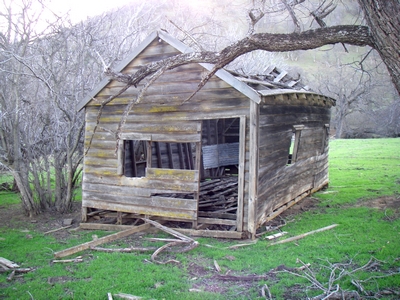

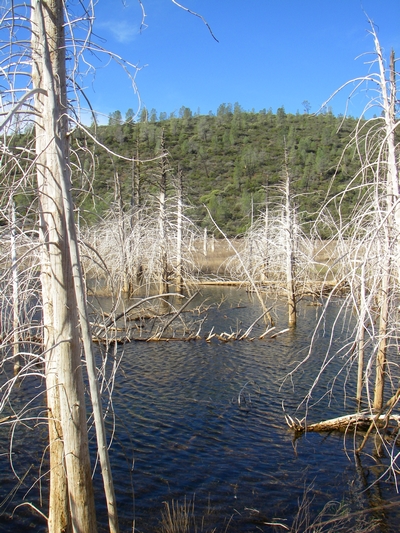
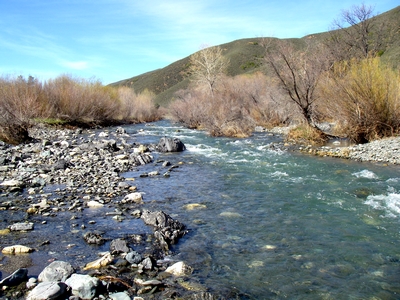
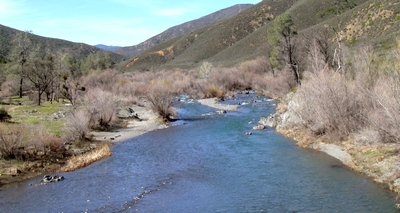
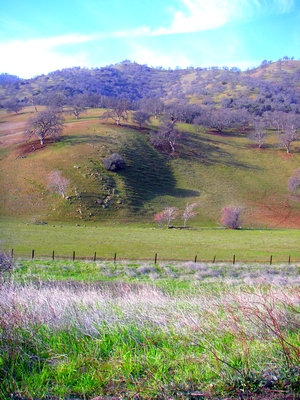 It was a heck of an adventure but was cut short before I reached paydirt, it still holds promise but now we’re captive to the weather and may have to wait a bit.
It was a heck of an adventure but was cut short before I reached paydirt, it still holds promise but now we’re captive to the weather and may have to wait a bit. The first glimpse of water is a welcome sight, and I’m focused on the immediate goal of waving a fly rod in anger. The creek empties the lake I’m looking for – and with clean clear water in the creek, I’m thinking the lake level should be just fine.
The first glimpse of water is a welcome sight, and I’m focused on the immediate goal of waving a fly rod in anger. The creek empties the lake I’m looking for – and with clean clear water in the creek, I’m thinking the lake level should be just fine.